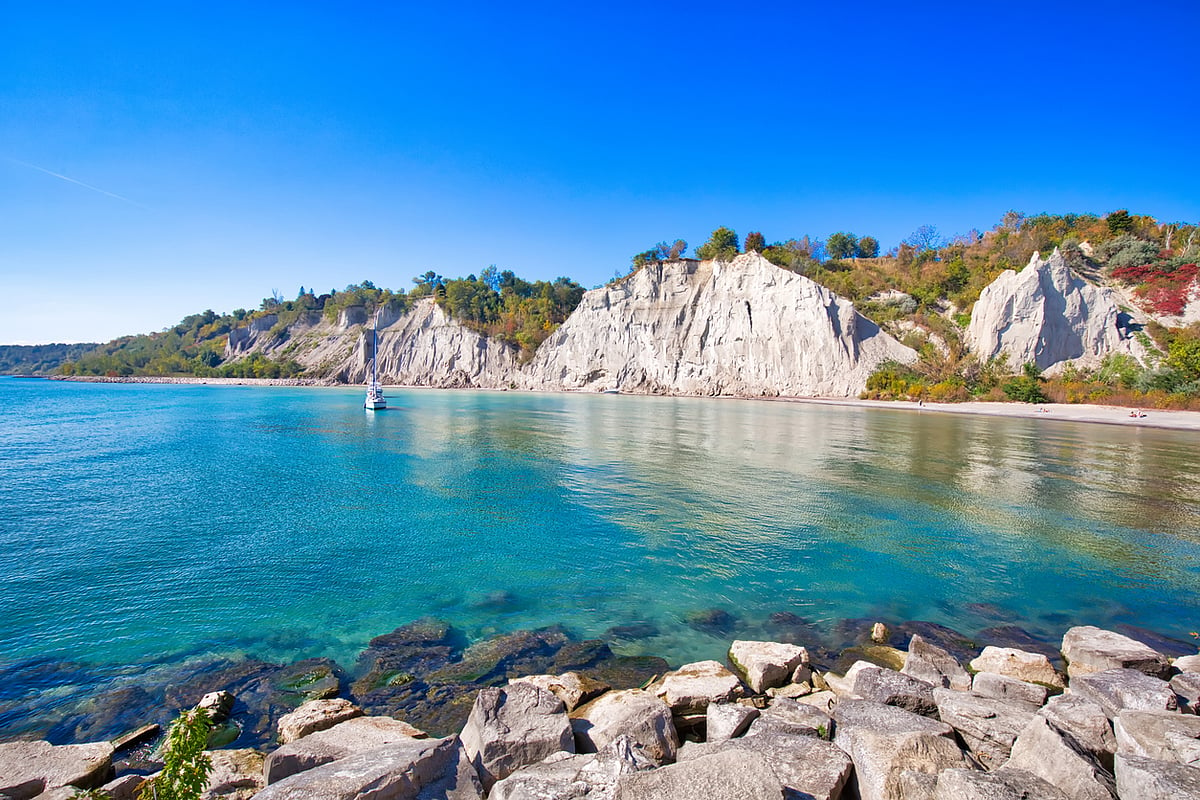Humans have always had a close connection with Lake Ontario. For centuries, this Great Lake has been a backbone of the region’s economy — relied upon for trade, food and industry. But a warming climate could dramatically change this relationship.
This wouldn’t be the first time climate change has affected how humans use this Great Lake, as I show in my new book The Lives of Lake Ontario: An Environmental History. During the Little Ice Age, which spanned roughly the 14th to 19th centuries, Indigenous and settler societies had to adapt to the cooling Lake Ontario environment.
As we again face a changing climate, the way our predecessors adapted during the Little Ice Age teaches us why it’s necessary we change how we use and interact with Lake Ontario today.
Little Ice Age
Prior to the onset of the Little Ice Age, the Lake Ontario region was occupied exclusively by different Indigenous Peoples — including the Haudenosaunee and Anishinaabeg. These groups regularly came to Lake Ontario to hunt, harvest and trade. They were highly attuned to local climate conditions, adapting their agricultural strategies accordingly.
But the Little Ice Age altered the climate in the region — with average temperatures about 1-2°C lower than normal. I argue in my book that the impact this period’s climate had on the environment and those living in the region helped change the course of empires in North America — both Indigenous and Euro-American.
This cooler climate led to seasonal unpredictability. This forced the region’s various occupants to adjust their resource and food acquisition strategies. A higher frequency of summer droughts could mean failed crops — while extremely heavy snows made it harder to hunt. These factors may have contributed to the severe decline of Indigenous populations in the region.
The origins of the fur trade — which dramatically reorganized society and altered political power in the Great Lakes region — are also at least partly attributable to the Little Ice Age. The cooler climate drove the desire for fur in Europe while also affecting the pelt thickness of North American animals.
The climate during the Little Ice Age also influenced various military campaigns due to its effects on the region’s weather and the lake’s conditions.
During the War of 1812, for instance, two American warships sank in a sudden summer squall north of Port Dalhousie. A lack of appreciation for the lake’s capriciousness could mean disaster — while those commanders who respected the local environment had the upper hand.
Agriculture
But alongside the challenges this cooling climate created, it also provided new opportunities.
As I contend in my book, climate changes during the period encouraged the diversification of agriculture and food production — such as the cultivation of wheat strains hardy enough to survive cooler conditions. Settlers also believed the mass conversion of forests and wetlands to fields could modify the climate, making it warmer. The influx of settlers reliant on these new types of agriculture fundamentally shaped the emerging political and economic systems around Lake Ontario.
Heavier ice cover on Lake Ontario actually made winter transportation easier in some ways.
Temperatures during the Little Ice Age frequently caused a thick freeze in the lake’s nearshore waters. This enabled alternative forms of wintertime travel which were generally cheaper, more flexible, and more dependable than travelling by boat. Skates, sleighs and iceboats were developed for both economic and recreational needs.
As the Little Ice Age began releasing its grip during the 19th century, Euro-Americans moved to the Lake Ontario basin in larger numbers. This climatic shift proved integral to settler expansion.
